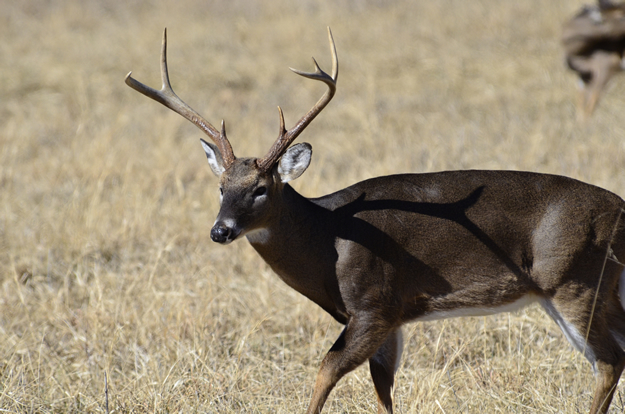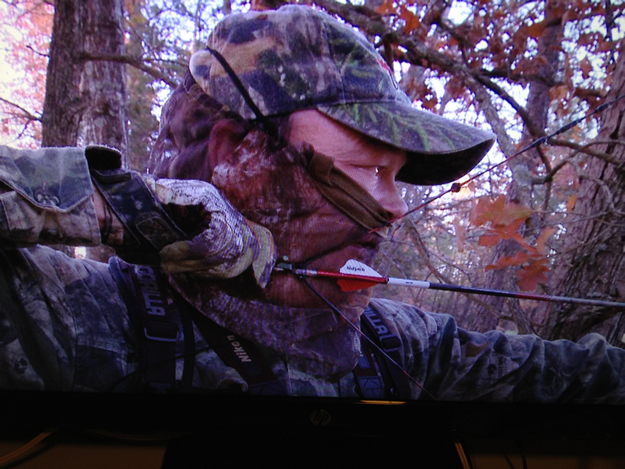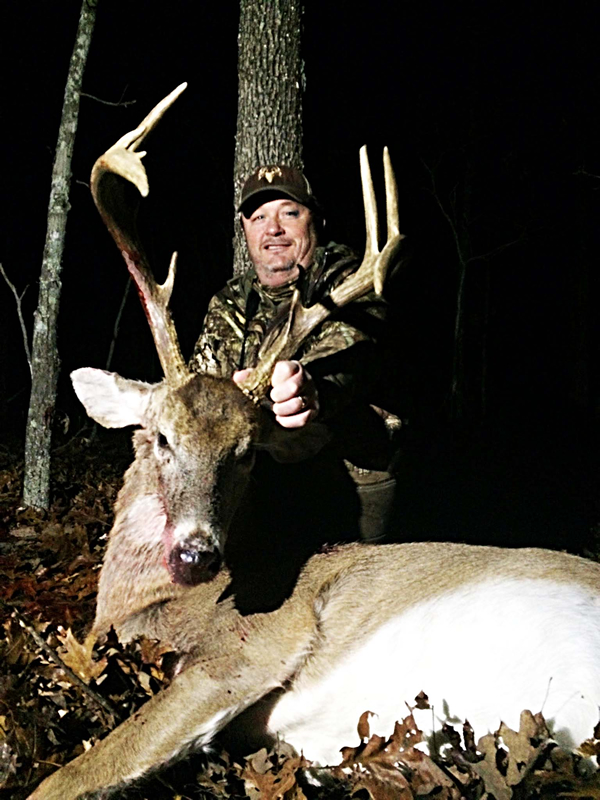
Editor’s Note: Alex Rutledge of Birchtree, Missouri, has been a Mossy Oak Pro Staffer for the last 6 years but has been in the hunting industry as a professional hunter and TV personality for more than 20years. Today he co-hosts the “Bloodline Outdoors” TV show on the Sportsman’s Channel and the “Bloodline Outdoors” radio show. When we asked Rutledge about his favorite Mossy Oak pattern, we found a true believer. “Mossy Oak’s original Bottomland is hard to beat, but I also hunt in Break-Up, and this year I’ll be hunting in Mossy Oak Break-Up Country.”
 I rely heavily on my trail camera pictures and the information I analyze from them and also have analyzed at www.myspypoint.com. There’s also a third factor that goes into my hunting plan- especially during the rut. On the properties I own and the places I have exclusive rights on to hunt, I don’t harvest does until after the rut. A mature whitetail has specific needs at certain times of the year and at particular times each day. Before the rut, he needs security, food, water and sanctuary. During the rut, he has a strong need to breed. He has to be able to find does that need to be bred, therefore the more does you have for a mature buck to check to see if they’re in estrus, the more that buck will move in daylight hours. Also we know that mature bucks expand their home ranges during the rut to find does to breed. So, the more does you have on your property just prior to the rut and during the rut, the more older-age-class bucks you potentially can lure onto your property. I do believe in quality deer management and in harvesting does to keep a lower buck-to-doe ratio. However, I believe and I find to be true on the properties I hunt, that by harvesting the does after the rut, I can attract and hold more big bucks on my property just before and during the rut than I can if I harvest does after the rut.
I rely heavily on my trail camera pictures and the information I analyze from them and also have analyzed at www.myspypoint.com. There’s also a third factor that goes into my hunting plan- especially during the rut. On the properties I own and the places I have exclusive rights on to hunt, I don’t harvest does until after the rut. A mature whitetail has specific needs at certain times of the year and at particular times each day. Before the rut, he needs security, food, water and sanctuary. During the rut, he has a strong need to breed. He has to be able to find does that need to be bred, therefore the more does you have for a mature buck to check to see if they’re in estrus, the more that buck will move in daylight hours. Also we know that mature bucks expand their home ranges during the rut to find does to breed. So, the more does you have on your property just prior to the rut and during the rut, the more older-age-class bucks you potentially can lure onto your property. I do believe in quality deer management and in harvesting does to keep a lower buck-to-doe ratio. However, I believe and I find to be true on the properties I hunt, that by harvesting the does after the rut, I can attract and hold more big bucks on my property just before and during the rut than I can if I harvest does after the rut.
 I’ve learned that as rutting activity increases, the number of bucks that I can photograph on my property increases. Right now at this time just before the season (late July), I’ve got six bucks on pictures from my land, but as the rut arrives that number may increase to about 20 bucks. I’ve learned from my trail-camera pictures that I spot some bucks on my property each year that I only see during the rut. From this information, I’m convinced that because I carry a large number of does on my land until after the rut, I’m pulling in mature bucks from other properties during the rut. But again, no one factor always produces older-age-class bucks. Not only do I have plenty of does on my property during rut, I have an abundance of food, water and sanctuary that holds bucks all year on the land I own and allows me to draw in more bucks. Then some of those bucks will stay on my property after the rut.
I’ve learned that as rutting activity increases, the number of bucks that I can photograph on my property increases. Right now at this time just before the season (late July), I’ve got six bucks on pictures from my land, but as the rut arrives that number may increase to about 20 bucks. I’ve learned from my trail-camera pictures that I spot some bucks on my property each year that I only see during the rut. From this information, I’m convinced that because I carry a large number of does on my land until after the rut, I’m pulling in mature bucks from other properties during the rut. But again, no one factor always produces older-age-class bucks. Not only do I have plenty of does on my property during rut, I have an abundance of food, water and sanctuary that holds bucks all year on the land I own and allows me to draw in more bucks. Then some of those bucks will stay on my property after the rut.
I run spin feeders all year long in my front yard at my home, so my front yard also is a sanctuary for does. I don’t harvest any deer near or around that feeder. Once the rut arrives, I know that I have a large number of does on the 200 acres where I live. Not only am I not harvesting my bucks and does until after the rut, the does that come to the feeder in the front yard are never shot at or harvested. I’ve trained those does to know that I won’t harm them. Now you can set-up these types of sanctuaries in most states with the understanding that you can’t and won’t hunt around these feeders. To take mature bucks each season, you have to know for sure before you climb into your tree stands or ground blinds that you’re going to take that buck that day or at least within the next 2-3 days. To hunt with that kind of certainty, the buck can’t know you’re in the woods, therefore he feels confident in going to the same places at the same times as he always has.
Five Keys to Taking Older-Age-Class Bucks Every Season:
- Find a deer you want to take
- Use the equipment that will help you gain all the knowledge you can learn about the bucks you want to take during the season
- Become extremely proficient with whatever sporting arms you will use to hunt
- Create sanctuaries for the bucks you want to try and take during hunting season, so they don’t change their movement patterns during daylight hours once deer season arrives, so you can harvest those bucks
- Set-up the properties you want to hunt as sanctuaries where the deer have food, water and plenty of does to give them no reasons to leave your property
Although we all get excited and talk about the big bucks we’ve taken, for me the thrill of deer hunting is being able to learn where older-age-class bucks live, watching them on trail cameras all year long and being able to take those deer on the day I plan to hunt them. For me, the hunt is far more important than taking the animal, because when you take the animal, the hunt’s over.
Yesterday: Productive Deer Stand Site Placement



























